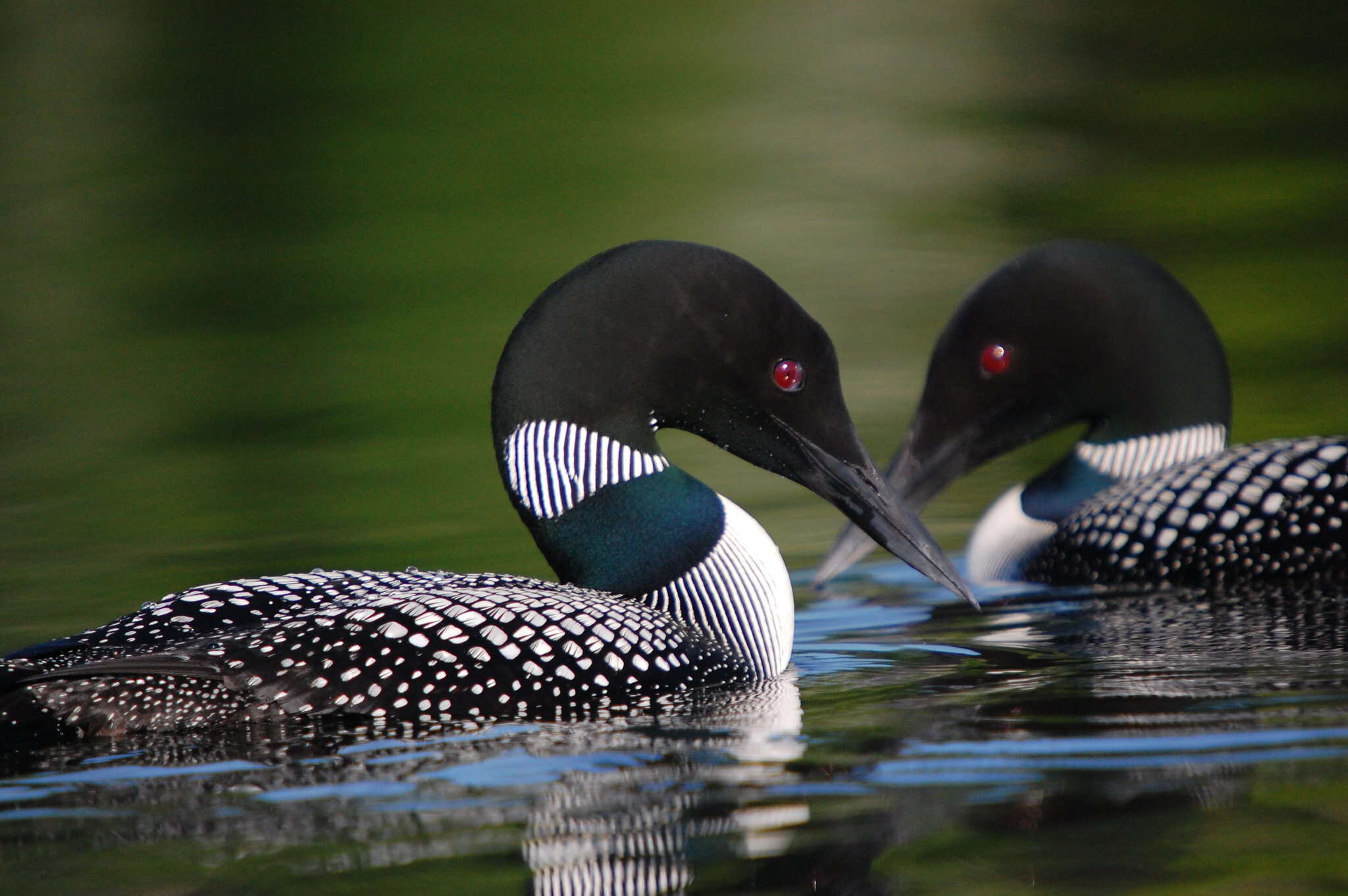Common loon
(𝑮𝒂𝒗𝒊𝒂 𝒊𝒎𝒎𝒆𝒓)
Conservation Status: Least Concern (Population decreasing)
Photo Credit: Gary J. Wege, USFWS – Midwest Region/ Creative Commons
Facts: You might recognize the familiar wail of the common loon that echoes along the banks of Maine. Inhabiting the coastal waters and large southern lakes, these are true water birds, only going to shore to mate and lay their eggs. They have dense bones to help them as they dive for food, which includes small fish, such as minnow, shad, rock cod and perch, as well as some crustaceans and mollusks. Common loons are great indicators of water quality, as they require crystal clear lakes.
The famous yodeling call is how these birds claim their nesting sites. Nests are built in quiet protected areas close to the bank, as these birds do not walk well on land. Nests are built by both the males and the females over the course of May and June and reused from year to year.
Fun Fact: One feature often associated with the common loon is their bright red eyes, but, outside of mating season, their eyes actually change to a greyish color. They also lose the majority of spots on their plumage during this time as well, appearing more of a dark brown color with barely any spots at all.
Sources: https://www.audubon.org/field-guide/bird/common-loon, https://www.allaboutbirds.org/guide/Common_Loon/overview#, https://extension.umaine.edu/.../indicat.../loon-fact-sheet/

